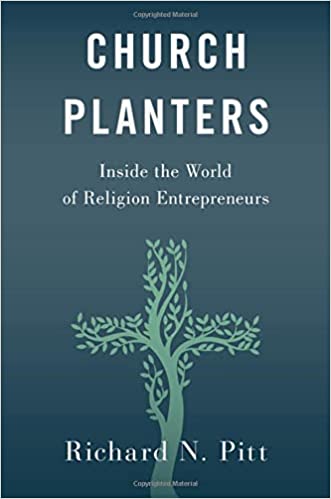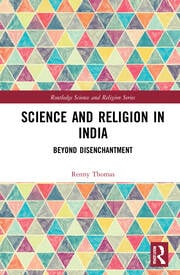

■ Church Planters: Inside the World of Religion Entrepreneurs (Oxford University Press, $34.95), by Richard N. Pitt, responds to a noticeable gap in research about the practice of establishing new Protestant congregations, which has grown markedly in recent years. As the title of the book implies, Pitt takes a supply-side approach to church planting, looking at the techniques and approaches of entrepreneurial pastors and the factors leading to their founding of such congregations. He finds that church planters often arrive at their ministry through practical concerns rather than a supernatural sense of calling, such as being unable to find a place in established congregations or conflicts with senior pastors. While noting that they overlap in many cases, he distinguishes three approaches to church planting, observing that many planters today are starting client-based ministries that serve tangible rather than strictly spiritual needs, such as by offering health and various kinds of material assistance, while others focus on conversion, and still others seek to create a strong sense of belonging and fellowship.
From his interviews with 125 church planters (though not necessarily a representative sample), Pitt finds that a majority of founders (53 percent) are bi-vocational, with high rates of ethnic and racial diversity. In comparing church planters to other kinds of entrepreneurs, the book argues that while the former measure risk and success differently than their secular counterparts, they recognize that attendance and workable budgets often define their effectiveness and share a great deal with other for-profit and non-profit organizations. Like other entrepreneurs, they also engage in competition with other church planters and understand the importance of filling niches and dealing with the realities of bureaucracy and hierarchy.

■ In recent years, there have been several studies and books on the religious and spiritual beliefs of scientists in different parts of the world, but Renny Thomas’s new book, Science and Religion in India: Beyond Disenchantment (Routledge, $160; $44 ebook), is unique for its hands-on ethnographic approach that follows scientists into their laboratories to study their religious lives, or lack of one. Far from a study based on surveys, Thomas spent several years in a prominent lab in India studying the details of both lived science and lived religion. Also unique is Thomas’s inclusion of scientists from other religious traditions besides Hinduism, such as Islam, Christianity, Buddhism, and Sikhism. The sociologist first attempts to debunk the Western “grand narrative” of a rift between science and religion by showing how Indian scientists practice various rituals without any sense of conflict with their profession as scientists. Yet the view that Indian scientists are naturally religious is equally challenged. Among those scientists identifying as “atheists,” “agnostics,” and “materialists,” the atheism involved is not similar to that of such scientists as Richard Dawkins, as it is often shaped by the scientists’ Indian cultural and caste upbringing, where the anti-religious sentiment that rejects religious observances and rituals does not fit.
In contrast to Western secular and religious scientists, the Indian scientists Thomas interviews tend not to see the need to justify their faith on scientific grounds. “Rather they considered such inquiries superfluous and wholly unnecessary. In order not to feel any sense of conflict, they seem to avoid the question of the rationality of their belief and the need to find proofs for the existence of religion. For them religion cannot be conceptualized from an ‘objective point of view’ since religion and science occupied different realms. At the same time, they do not separate or posit science and religion in oppositional terms as they think their religious beliefs and practices help them to do better science.” Thomas concludes that the equally binary approach of claiming that science and religion complement each other is “used for the purpose of cultural nationalism, which is very much part of all the majoritarian right-wing political regimes. In India, the natural co-existence of science and religion has been used to describe the greatness of Hinduism in accommodating modern science. This not only creates the illusion that Hinduism as a religion is naturally fit to accommodate modern science, but leads to various claims, such as the existence of science in Vedas and ancient Indian scientific wisdom.”